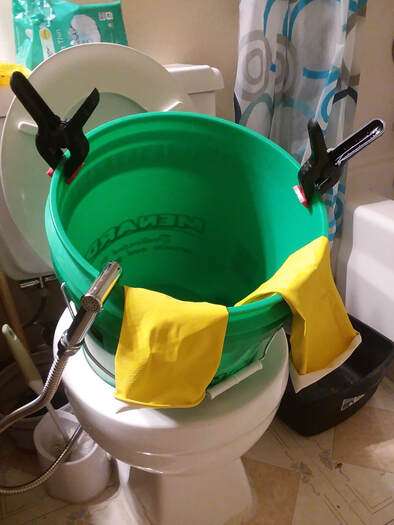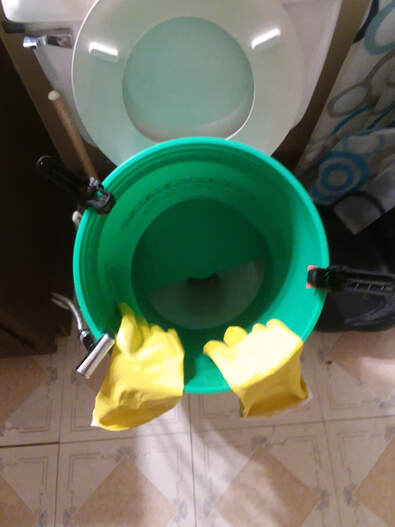|
So as I alluded to in a previous post my family was going to be expanding a bit in August. Well it is now the end of September and that TERRIFYING/WONDERFUL thing has happened and my family has now grown by one more. I'm not going to tell you their name or post a picture of their butt in a cloth diaper so don’t worry about that. I don’t believe in putting pictures of personal things or people out there unless I have their explicit permission. Which is of course is hard to get from someone that is only a month old.
But since little one has been in cloth diapers now for a few weeks I wanted to share some early thoughts I have on the difficulty of cloth diapers versus disposable. Just so everyone is clear when I am referring to cloth diapers I am referring to a type called a pocket diaper. Where you have a separate liner and a waterproof shell with a built in pocket. You can see what I mean in the product link below We decided on this type of diaper for two reasons,
Ease of Use If you just consider the actual act of diapering a baby then the ease of use in my limited experience is about equivalent to the disposable diaper. They snap on with a series of buttons that can be adjusted to fit on the baby one day from the next. This is similar to the sticky or velcro straps of a disposable while just being a little bit less customizable. But when you use cloth diapers you have to consider the prep that leads to the use of the diaper. With disposables you just have to open the box and you are good to go, that of course is not how cloth diapers work. To use a cloth diaper you have to first wash it, dry it, restuff it with a liner and set it to the size you need. I spend 30-45 minutes a day dealing with diapers not including the time they are in the wash or drying. So while the prep does have an impact on my time it's not so onerous that it bothers me. What would really bother me would be to have to leave my house at 8:30 at night to go get some diapers which I did have to do for their first weeks of life. Leaks So far even through a couple of blowouts and all you new parents out there know what I'm talking about when I say blowouts the diapers have not leaked when put on properly. The only leaks that have occurred are when the diaper is put on wrong in the middle of night by a sleep deprived parent. Cleaning the diapers The obvious difference between cloth and disposable is that you have to wash the one and toss the other. Both have their pros and cons of course. The biggest pro for the disposal is that you don't have to wash them and deal with the mess once it's off the butt. There is however the smell factor that and the additional trash factor that must be taken into account. Bags of disposable diapers sitting in your trash can in the sun smell bad… like really bad. Not only do they smell bad but they are destined for a long afterlife in the landfill causing all sorts of problems. I have found that cleaning cloth diapers is just as easy as washing clothes with one additional step. You have to spray off the solids from the diaper before you wash it in the machine. Below is a picture of the setup I use to clean the solids from the diapers before I wash them. 
As you can see it consists of a 5 gallon pail, two spring clamps and a hose/sprayer attachment to the toilet. That little sprayer has enough pressure to remove even the most stuck on solids and I even turned it down from full pressure. It knocks the poop off and the water sluices the solids into the toilet bowl for later flushing. Takes at most 30 seconds with a poop diaper and much less with a pee diaper.
After that I just chuck the whole lot into the washing machine with the same eco friendly detergent I use for everything and they come out clean and fresh. Once they are washed they either get hung outside on the clothesline to dry which is the preferred option or they get hung up in the house. If you plan on hang drying in your house, plan for it to take at least overnight to dry especially the liners. I have found the bamboo fiber liners take the longest sometimes well into the following day. This of course will all depend on your specific situation. If you have a compact drying rack like the one shown below then a fan at the bottom blowing air up through the rack can greatly reduce drying times. This way is also less energy intensive than using a dryer and is less likely to cause stains to set into the diapers. Final thoughts Like I mentioned in another post I got a lot of pushback on the idea of using cloth diapers mainly along the lines of it not being easy, expensive, or it takes too much time. Well so far all those naysayers have been flat out wrong. Using cloth diapers is very easy, very affordable and what little extra of my time it takes is more than offset by the cost savings of not buying disposables, and the environmental benefits. Cloth diapering is coming back around as people become more conscious of their impact and their children's impact on the world around them and it has never been easier to do than right now. The cloth diapers of today are worlds different than the ones of times past gone are the leaky folded towels and the clothes pins. These are not your grandma's cloth diapers
0 Comments
Leave a Reply. |
AuthorHello my name is Josh Larson and I am the creator of the Green Living Library. Here on the blog you will find updates to content found in the Green Living Library as well as stories from those living the sustainable life already. Archives
December 2021
Categories
All
|


